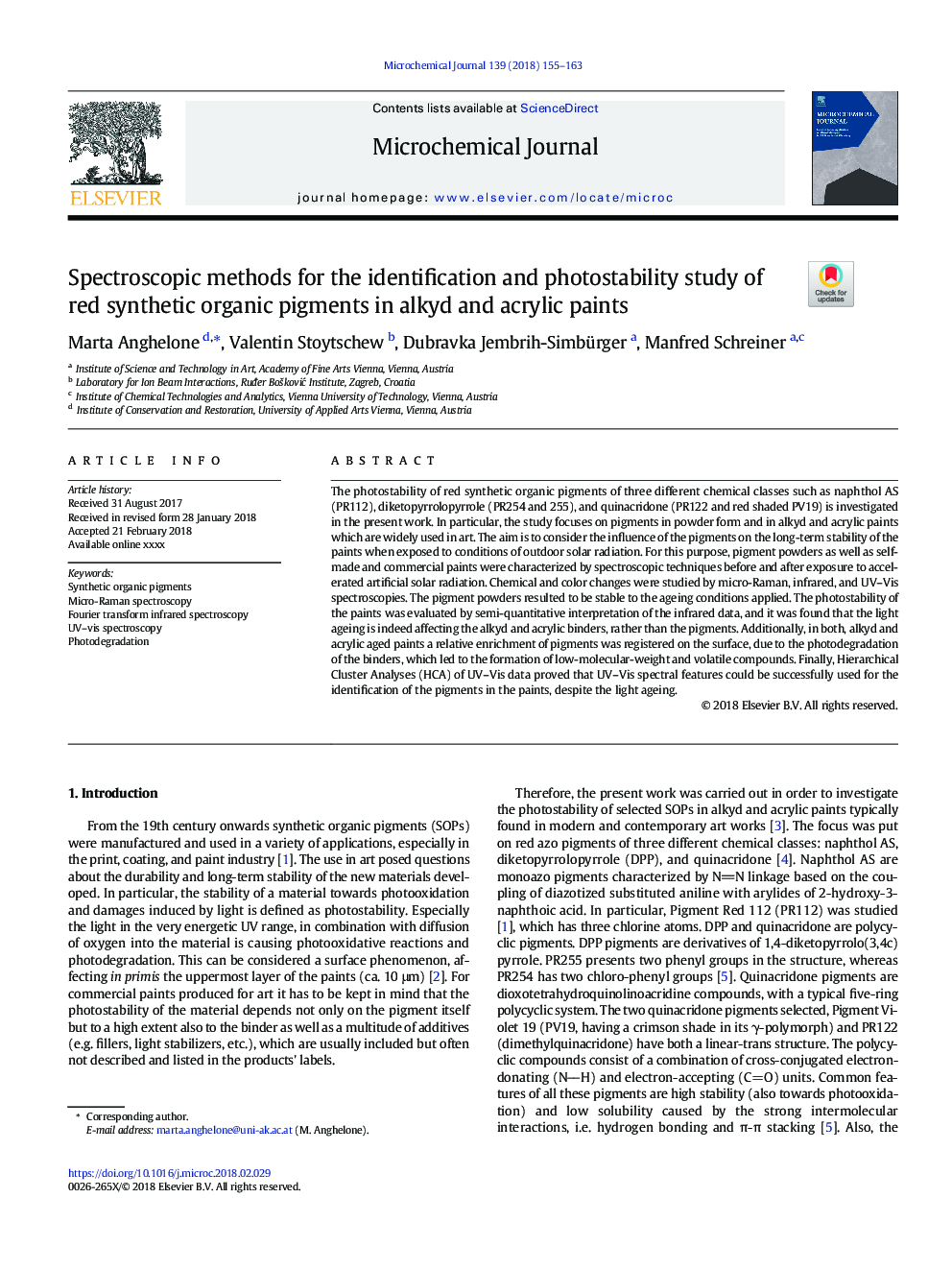| Article ID | Journal | Published Year | Pages | File Type |
|---|---|---|---|---|
| 7640729 | Microchemical Journal | 2018 | 9 Pages |
Abstract
The photostability of red synthetic organic pigments of three different chemical classes such as naphthol AS (PR112), diketopyrrolopyrrole (PR254 and 255), and quinacridone (PR122 and red shaded PV19) is investigated in the present work. In particular, the study focuses on pigments in powder form and in alkyd and acrylic paints which are widely used in art. The aim is to consider the influence of the pigments on the long-term stability of the paints when exposed to conditions of outdoor solar radiation. For this purpose, pigment powders as well as self-made and commercial paints were characterized by spectroscopic techniques before and after exposure to accelerated artificial solar radiation. Chemical and color changes were studied by micro-Raman, infrared, and UV-Vis spectroscopies. The pigment powders resulted to be stable to the ageing conditions applied. The photostability of the paints was evaluated by semi-quantitative interpretation of the infrared data, and it was found that the light ageing is indeed affecting the alkyd and acrylic binders, rather than the pigments. Additionally, in both, alkyd and acrylic aged paints a relative enrichment of pigments was registered on the surface, due to the photodegradation of the binders, which led to the formation of low-molecular-weight and volatile compounds. Finally, Hierarchical Cluster Analyses (HCA) of UV-Vis data proved that UV-Vis spectral features could be successfully used for the identification of the pigments in the paints, despite the light ageing.
Keywords
Related Topics
Physical Sciences and Engineering
Chemistry
Analytical Chemistry
Authors
Marta Anghelone, Valentin Stoytschew, Dubravka Jembrih-Simbürger, Manfred Schreiner,
